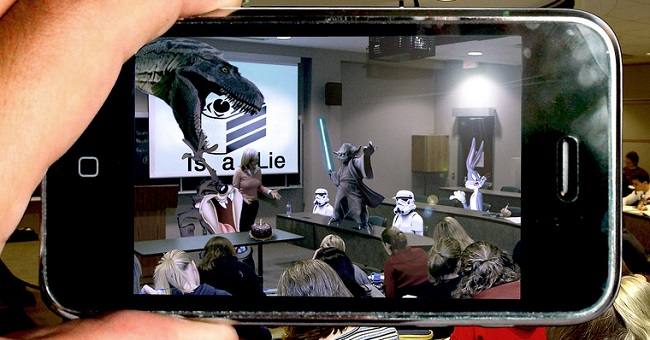While the overall utilization of VR has been successful, the question remains whether or not this advanced technology can be used as a tool to help students with special needs, including those with autism, attention deficit hyperactivity disorder (ADHD), developmental disabilities and physically disabilities.
What is Virtual Reality Technology?
Virtual Reality technology allows users to participate in a three-dimensional virtual world, determining their own actions and responses to what is presented. There are increasingly complicated levels of Virtual Reality, with ‘immersion’ as the most sophisticated. At this level, the user must wear a headset that contains two small screens, which hover in front of each eye, as well as headphones to transmit sound in the virtual world. This set up allows the user to feel that they are in the scene as the program tracks their behavior and adjusts accordingly.
While this technology might seem more science fiction than practical, VR has become increasingly popular as a tool used in the special needs classroom. This has caused educators and scientists alike to ask two valuable questions: Can VR technology really help special needs education? And if so, then how?
Train for Physical Surroundings
Even though we might not see VR technology used widely in SEN classrooms, this technology has been utilised for special needs over the last two decades. In 2002, the Oregon School for the Blind was recognized for their use of Virtual Reality software to help blind students learn how to safely cross a busy street.
Using headphones, students practiced picking out sounds and following a teacher’s prompts to safely overcome obstacles that they might encounter on a daily basis. This safety training can be fine-tuned to each student’s needs, helping them become more prepared for the outside world.
Help with Social Interaction and Communication Skills
One of the hallmarks of autism is a child’s inability to communicate needs or interact on a social level with others. Because autism is a spectrum disorder, there is no ‘one-size-fits-all’ approach to treatment. Virtual Reality programs allow therapists and teachers to adjust the program's to each student's needs.
Virtual Reality provides children with autism with a predictable environment in which to practice social interactions. These interactions with virtual peers allows children with autism to be more comfortable in social environments, with skills that will translate over into real life.
Managing Stimuli
Children with autism also have a hard time managing stimuli, especially when something unexpected happens during a routine. Mathieu Marunczyn, a teacher in Australia, has discovered that programs using the VR technology Oculus Rift can allow children not only to explore a virtual situation, but to relax, because stimuli can be controlled in this virtual environment. Being able to calm one’s self is a huge life skill, and VR technology can assist with that process.
VR as an Adaptive Technology
Those who work in special needs education have used adaptive technologies for many years, including iPads with applications to aid communication, Sony Playstation 2 EyeToys with large screens for children with visual impairments, and electronic switches for students with motor difficulties. As new tools like Virtual Reality have become available, therapists and teachers have used them to help foster understanding, improve concentration and communication skills, and give students with disabilities the best environment in which to learn.
Have you used VR in an SEN environment? Share your experiences below!


















